Legacy phone lines keep draining budgets and slow every change. The SIP trunking market will reach $73.14B in 2025 and is projected to hit $157.91B by 2030 at a 16.64% CAGR, driven by enterprise migration to IP voice and mandated PSTN retirements.
Deadlines add pressure. In the UK alone, BT urges businesses to move off PSTN by December 2025, ahead of a final shutdown phase running to January 2027, a pattern other markets are following.
The problem’s clear: legacy telephony locks you into fixed line rentals, long provisioning times, and brittle failover. The solution’s proven: SIP trunking cuts recurring access costs, scales on demand, and routes around outages with carrier-grade controls. If you need the basics, see our “What is SIP Trunking” article; here we focus on the benefits of SIP trunking you can quantify and deploy now.
Next, let’s translate those market shifts into line-item savings your finance team will sign off.
Key Takeaways
- SIP trunking cuts telecom costs by tens of thousands annually through lower per-minute rates, eliminated line rentals, and consolidated voice/data bandwidth.
- Unlike PRI circuits that take 6–8 weeks to provision, SIP scales channels instantly—ideal for seasonal retail peaks, call center spikes, and global branch launches.
- Carrier-grade SIP ensures reliability with QoS, direct interconnects, and geo-redundant failover, protecting uptime during power outages or regional disasters.
- SIP integrates seamlessly with PBXs, UCaaS, CRMs, and APIs, enabling unified communications, automated call logging, analytics, and compliance tracking.
- Encrypted signaling (TLS) and media (SRTP) plus carrier fraud monitoring deliver HIPAA, PCI, and GDPR compliance while avoiding multimillion-dollar fraud losses.
- SIP future-proofs communications for hybrid work, AI voicebots, CPaaS workflows, and omnichannel CX, making it the foundation of enterprise telephony strategy.
- DIDlogic provides local DIDs in 150+ countries with centralized management, usage-based pricing, and carrier-grade resilience for global businesses of any size.
The Real Cost Savings of SIP Trunking
You don’t save because “VoIP is cheap.” You save because legacy billing stacks pile on line rental, setup fees, and slow provisioning, costs SIP trunking removes.
International calling, apples-to-apples. Regulators show how wide the gap runs:
- PSTN basic rates can reach $5.00/min to some destinations. The FCC’s tip sheet uses a 60-minute call to India as a clear example.
- Even discounted landline plans often sit around $0.28/min plus a monthly access fee
- VoIP international rates to major destinations are a few cents per minute, per FCC consumer guidance that compares traditional plans with internet calling.
- On top of per-minute charges, UK landlines often add a connection fee (~23p) every call.
A simple model: 200-employee firm
Assumptions you can audit:
- 10,000 international minutes/month.
- Legacy plan at $0.28/min; SIP at $0.02/min (representative “few-cents” rate).
- 3 PRI circuits for ~69 channels (23 each).
- PRI monthly cost band $350–$650 per circuit; many markets now price higher as PRIs sunset.
Usage savings (international minutes)
- $0.28 × 10,000 = $2,800/month (PSTN)
- $0.02 × 10,000 = $200/month (SIP)
- Delta: $2,600/month (≈ $31,200/year)
Access savings (lines vs SIP)
- 3 PRIs × $350–$650 = $1,050–$1,950/month avoided line rental as you move to IP trunks. Rising PRI prices push the high end higher.
Total conservative savings:
- $3,650–$4,550/month → $43,800–$54,600/year, before you count connection-fee removal and lower hardware upkeep.
Eliminating Legacy Line Costs
PRIs and BRIs charge rent whether you use them or not. SIP doesn’t.
Before vs After (monthly)
| Cost item | Legacy (PRI/BRI) | With SIP trunking |
| Line rental (3× PRI) | $1,050–$1,950 | $0 |
| Connection/setup fees per call | 23p each (UK example) | $0 |
| Hardware depreciation (PRI cards) | Ongoing | $0 |
| Provisioning delays | Weeks | Same-day / instant |
Ofcom’s guidance on per-call setup fees and the documented rise in PRI prices show how much dead spend sits in the old stack.
Before/After model (yearly):
Line rental avoided: $12,600–$23,400. Add your usage delta, and the line-item story writes itself.
Consolidating Voice & Data
Running separate voice circuits made sense when codecs and QoS weren’t mature. Today, one IP pipe carries both, reliably.
- Bandwidth math: A G.711 call consumes ~80–87 kbps with headers. A G.729 call sits around 24 kbps. That means 100 concurrent G.711 calls ≈ 8–9 Mbps of assured capacity; far less with G.729. Cisco’s design notes confirm those figures.
- Financial impact: Instead of paying for multiple PRIs plus broadband, you reserve ~10–20 Mbps for voice on your existing fiber and enforce QoS. You drop line rentals, connection fees, and the truck-roll tax tied to legacy circuits.
- Operational impact: One network to secure, monitor, and scale. QoS and SLAs protect call paths on the same link that already carries your apps.
Back-of-napkin: If your firm needed 60 concurrent calls, that’s ~5–6 Mbps with G.711 or ~1.5 Mbps with G.729. You retire two to three PRIs and shift to reserved IP bandwidth, less money, more control, same quality. (Cisco)
Scalability & Flexibility in Practice
SIP trunking fits how teams work now. Hybrid work sits around 18–28% of U.S. workers in 2024, so capacity must shift fast as people move between home and office. Multisite footprints compound the strain: new stores, satellite offices, and pop-up sites need numbers and channels in days, not months. Holiday peaks add more pressure, contact center calls jumped 41% during Thanksgiving, Cyber Monday in 2021. SIP absorbs those swings without new copper, new cards, or lengthy site visits.
Legacy circuits don’t flex. A new ISDN30 often quotes 6–8 weeks for delivery; even basic line work lists multi-week lead times. SIP grows or shrinks on the same IP pipe, so teams add channels or DIDs as needed and roll back after the peak.
Scale on Demand
Need capacity today, not next quarter? SIP turns that into a change request, not a construction project.
- Retail, November–December: Add 50–200 channels for peak weeks, then drop back in January. Avoid 6–8 week circuit waits and per-site hardware. Holiday surges can reach +41% call volume; SIP handles it by right-sizing in minutes.
- Outbound programs: Call centers spin up campaigns that double traffic for 30 days. SIP trunks burst within policy while QoS protects voice. No truck rolls, no PRI cards.
- Project teams: Temporary sites or events need numbers and capacity for a short window. Assign local DIDs, route to remote agents, and retire them after close.
Expansion Without Borders
Opening a branch abroad shouldn’t stall on cabling.
- Local presence in days: Order country-specific DIDs, assign caller ID, and publish numbers the same week. Route to existing PBX, UCaaS, or softphones.
- One backbone, many countries: Keep a single routing policy and add sites as SKUs, not projects.
Next, we’ll unpack carrier-grade reliability, QoS, codecs, and redundancy that keep voice steady under load.
Reliability & Call Quality (Carrier-Grade Factors)
Call quality comes from design, not luck. SIP trunks carry audio with proven codecs, traverse networks with QoS markings, and ride direct interconnects that remove unnecessary hops. When trouble hits, DNS-level failover and geo-redundant trunks keep sessions flowing.
- Codecs that fit the job. G.711 delivers toll-quality at 64 kb/s; G.711.1 extends bandwidth while staying interoperable with legacy endpoints. Opus (RFC 6716) adapts from 6–510 kb/s with strong packet-loss concealment, ideal for variable networks.
- QoS that the network respects. DiffServ’s EF PHB (DSCP 46) marks voice for expedited forwarding, so routers move it ahead of best-effort traffic. Microsoft’s guidance tracks live latency, jitter, and loss to guard user experience.
- Direct interconnects. Peering trims switch hops and post-dial delay and cuts failure points versus transiting the public internet. Fewer middle miles, steadier audio.
- Targets that teams can measure. ITU-T flags ≤150 ms one-way delay as acceptable for interactive voice; network tools should keep you within that window and watch loss and jitter continuously.
Consistent Performance with QoS
Quality starts with prioritization.
- Mark and police correctly. Tag RTP streams with EF (46) and enforce queues end-to-end. That keeps speech ahead of bulk transfers and sync jobs. Cisco’s QoS guides outline EF handling across WAN and campus.
- Monitor what users hear. Track per-stream latency, jitter, and packet loss, not just link utilization. Microsoft’s call quality dashboards surface direction-specific impairment so you can fix the right hop.
- Hold vendors to SLAs. Large UC platforms publish tight voice SLAs, 99.99–99.999% for calling workloads, which translates to minutes of downtime per month, not hours. Use those numbers as a purchasing baseline.
Built-In Redundancy
Redundancy isn’t a checkbox; it’s layered.
- SIP-aware DNS failover. RFC 3263 lets clients try alternate SRV targets automatically when the first proxy or SBC fails. That’s seamless failover at call setup without manual reroutes.
- Parallel paths and forking. SIP supports multiple targets and forking, so registrations and inbound attempts can land wherever capacity remains. Combine that with health-checked SBC pairs.
- Geo diversity by design. Terminate trunks in separate data centers/POPs and publish multiple SRV records. If a region drops, power loss, fiber cut, DNS redirects new calls to healthy sites. Active calls can re-invite or fail back per policy. Vendor implementations of RFC 3263 explicitly cover load balancing and failover sequencing
- Plan to the numbers. Keep one-way delay under 150 ms and watch jitter/loss thresholds in real time; those controls are what maintain MOS under stress events.
Seamless Integration with Business Systems
SIP trunks sit cleanly between your phone stack and your apps. They connect on-prem PBXs, cloud PBXs, UCaaS seats, and your CRM, without ripping out what still works.
PBX + UCaaS, side by side. Many firms keep an on-prem PBX for sites with strict controls, while shifting knowledge workers to UCaaS. Microsoft confirms four PSTN paths for Teams Phone, Calling Plans, Direct Routing, Operator Connect, and Teams Phone Mobile, so you can mix models by site or user. Metrigy’s 2024 findings show real-world blend: Teams Phone seats connect via Calling Plans (57%), Direct Routing (28%), and Operator Connect (12%). That’s hybrid in action, with SIP in the loop for Direct Routing and many Operator Connect carriers.
Why this matters. You standardize routing and numbering while keeping familiar devices and call flows. You also keep options open for contact center platforms, IVRs, and compliance recording.
Unified Communications Enablement
SIP provides the dial tone that powers meetings, video, and collaboration.
- Backbone for UC. SIP trunks feed UC workloads and connect them to the PSTN for external calls. IDC pegs worldwide UC&C revenue at ~$69B in 2024–2025, reflecting broad enterprise adoption and steady seat growth.
- Hybrid reality. You can connect Teams or other UC apps through Direct Routing with a certified SBC, or use Operator Connect where carriers expose trunks as a service. Microsoft’s documentation details both paths.
- Practical outcome. Keep the PBX for plants and warehouses, move HQ to UCaaS, and route both through carrier trunks. One numbering plan, unified policies.
CRM & API Use Cases
Calls gain value once the metadata lands in your systems.
- Salesforce example. Salesforce’s call-center integration supports click-to-dial, screen pops, transcripts, and automatic call logging tied to records. That reduces manual entry and improves case handling.
- HubSpot example. HubSpot offers built-in automatic call logging and supports third-party calling apps and CTI to place and record calls inside the CRM.
- APIs for custom flows. Use provider APIs to push call events to data lakes or BI tools. Track outcomes, retention, and compliance at the record level. Many Teams Phone deployments also rely on SIP-based Direct Routing with SBC policies and number assignment via PowerShell for granular control.
Business value, spelled out.
You get reliable call attribution, faster wrap-ups, and cleaner audits. Recording and retention policies align with PCI or HIPAA requirements when integrated with compliant platforms. IDC’s growth signals and Metrigy’s mix of connectivity options show this isn’t niche, it’s how enterprises wire voice today.
Business Continuity & Disaster Recovery
SIP trunks don’t just cut costs, they keep calls alive when your environment doesn’t. When pandemic office closures forced millions of agents remote, firms with SIP rerouted traffic to home setups in hours. A storm or power outage that takes down one data center can cripple legacy circuits; SIP trunks reroute automatically across regions. The difference is continuity versus silence.
Intelligent Call Rerouting
Routing is policy-driven, not hardware-bound.
- Office outage: Calls can flow to mobiles or softphones instantly, keeping customer lines open even if the main PBX is down.
- Disaster event: If a region floods or a data center loses power, SIP trunks reroute inbound calls to other offices without customers hitting a busy tone.
- Remote agents: During pandemic peaks, SIP trunks directed inbound calls to distributed teams, no PRI provisioning, no physical lines needed.
This agility moves resilience from “backup plan” to everyday feature.
Cloud-Level Resilience
Carrier-grade SIP trunks are hosted in multiple data centers by default.
- Geo diversity: Inbound numbers resolve to more than one SBC or POP. If one fails, DNS and SIP failover shift the load to healthy peers.
- No single point of failure: Legacy PRI ties one office to one central switch. SIP spans regions and clouds.
- Disaster recovery by design: Calls keep moving, even during regional outages, because the trunk lives in multiple sites simultaneously.
Global Reach with Local Presence
Enterprises want to appear local everywhere, without physical branches in every city. SIP delivers that with virtual numbers and broad global coverage. DIDlogic, for example, offers local DIDs in 150+ countries, giving businesses a local presence from Buenos Aires to Bangkok without leaving HQ.
Virtual Numbers for Market Entry
A U.S. software firm entering Latin America doesn’t need a physical office to look local. By activating Mexican and Brazilian DIDs, the company publishes local phone numbers customers trust. Calls route back to the U.S. contact center over SIP trunks, with latency controlled through direct carrier routes. The customer dials a local number; the business answers globally.
Centralized Management
Managing hundreds of numbers across countries becomes simple with a single SIP platform.
- One dashboard: Provision, reroute, or retire numbers in real time.
- Consistent policy: Apply compliance, recording, and fraud detection globally.
- Operational efficiency: Instead of juggling 20+ carrier contracts, teams run everything from a unified interface.
Global coverage plus centralized control means your brand looks established worldwide, while your operations stay lean.
Security & Compliance as a Competitive Edge
Regulated teams buy voice that proves control. Finance, healthcare, and public-sector stacks need audit trails, encryption, and vendor SLAs that map to policy. SIP trunking gives you those controls without locking teams to one site.
Regulatory Compliance
- HIPAA. The Security Rule requires administrative, physical, and technical safeguards for ePHI. SIP fits by enforcing access control, audit, and transmission protection.
- PCI DSS. Requirement 4.1 demands strong cryptography for cardholder data over open networks. TLS on signaling and SRTP on media meet that bar.
- GDPR. Controllers must apply “appropriate” measures, with encryption called out in EDPB guidance for transfers and storage. SIP over TLS and encrypted media help meet that standard.
Encryption & Fraud Mitigation
- In transit. Use TLS for SIP signaling and SRTP for media. SRTP adds confidentiality, integrity, and replay protection.
- Fraud controls. Telecom fraud cost an estimated $38.95B in 2023. Lock routing by policy, rate-limit authentication, and monitor anomalies with your carrier. The ROI is avoiding that loss.
- Operational hygiene. Enforce least-privilege on trunks, rotate credentials, and pin ciphers that meet current PCI/HIPAA expectations. Document it for audits.
Future-Proofing with SIP Trunking
You’re building for a decade of change. SIP gives you a standards-based edge that slots into cloud, AI, and omnichannel stacks.
- Cloud telephony. Migrate at your pace: keep plant floors on PBX, move knowledge workers to UCaaS, and anchor both on SIP.
- AI and analytics. Feed transcripts and events to your data lake. Drive QA, adherence, and voicebot training.
- CPaaS and workflows. The CPaaS market is expanding fast; analysts project strong double-digit CAGR into 2030. SIP underpins those programmable channels.
- Work from anywhere. Hybrid work remains embedded for remote-capable roles. SIP routes calls to offices, homes, or mobile endpoints without circuit work.
SIP isn’t a sidecar. It’s the voice foundation your next stack relies on.
Conclusion
SIP trunking delivers measurable wins: lower telecom spend, elastic capacity, carrier-grade reliability, audit-ready security, and global reach through local DIDs. SMEs gain fast savings with simpler ops. Enterprises gain policy control at scale. It’s a future-proof shift that pays now and prepares you for what’s next.
Test DIDlogic’s carrier-grade SIP trunks with a free trial and experience enterprise reliability at usage-based costs.
FAQs
How quickly can a business migrate to SIP trunking?
Pilot in days. Full cutovers follow number porting timelines and SBC readiness.
What internet requirements ensure stable call quality?
Target ≤150 ms one-way latency, low jitter, and minimal loss. Reserve bandwidth and enforce QoS.
Can SIP trunks coexist with a legacy PBX during migration?
Yes. Run SIP to an SBC, keep PRIs as fallback, and phase sites by group.
How is SIP secured against fraud and eavesdropping?
Use TLS for signaling and SRTP for media. Add carrier-side fraud monitoring and strict routing.
What’s the ROI timeframe for SMEs vs large enterprises?
SMEs often see payback within months from line-rental cuts. Large firms add usage savings and faster provisioning.
Does SIP support remote and hybrid work setups?
Yes. Route to softphones or mobiles with policy controls. Hybrid remains widely adopted.
How does DIDlogic’s SIP coverage compare globally?
DIDlogic provides local and toll-free numbers across 150+ countries, with carrier interconnects for low-latency routing.
Further Reading
- What is SIP trunking?
- SIP trunking capacity
- SIP trunking security
- Differences between SIP trunking and cloud PBX
- Differences between SIP trunking and telephony
- Differences between SIP trunking and IP trunking
- SIP session vs SIP trunk
- Differences between SIP Trunking and Session Border Controllers
- SIP Trunking vs PSTN
- SIP Trunking vs H.323
- SIP Trunk Costs
- SIP Trunking Migration Plan
- SIP Trunking Requirements


